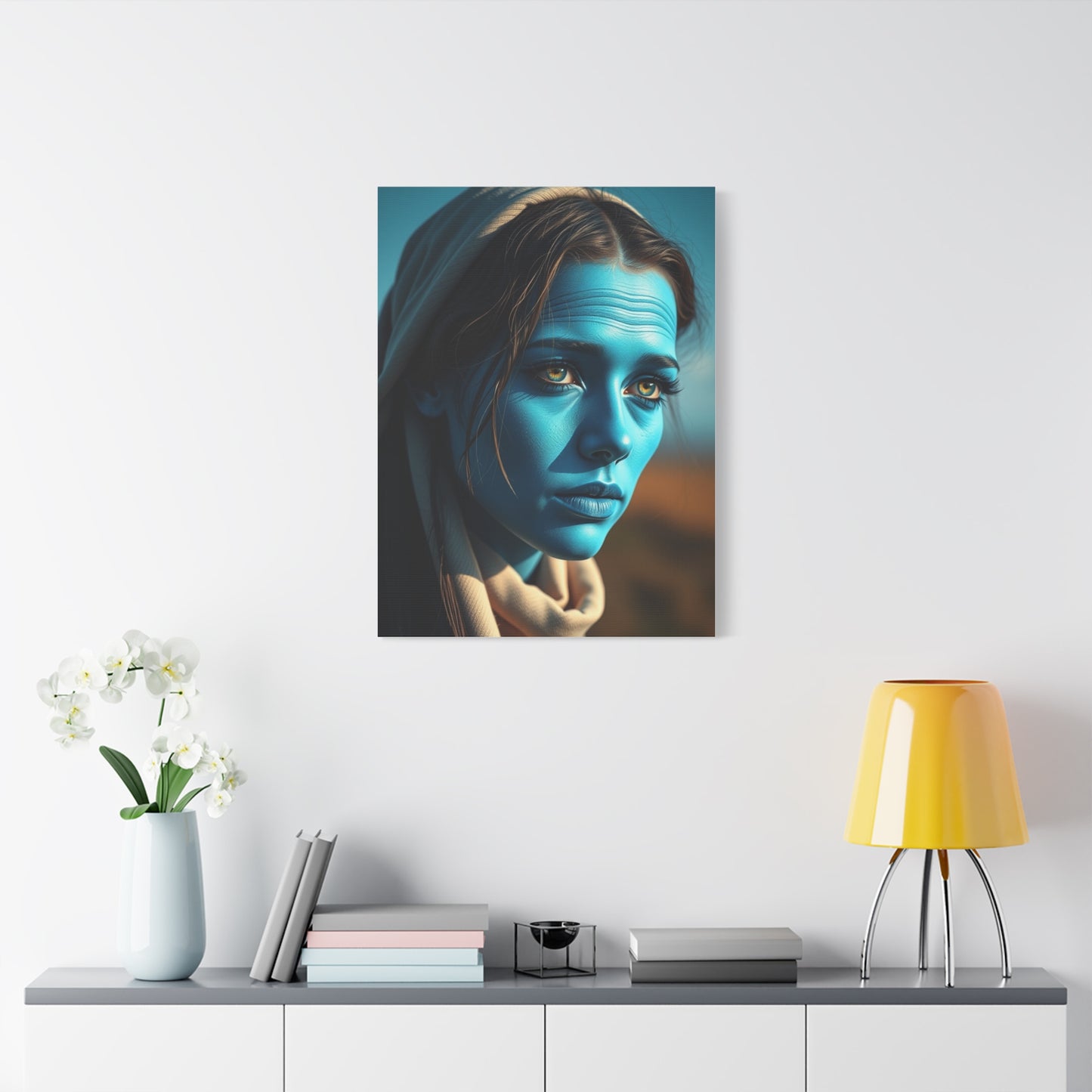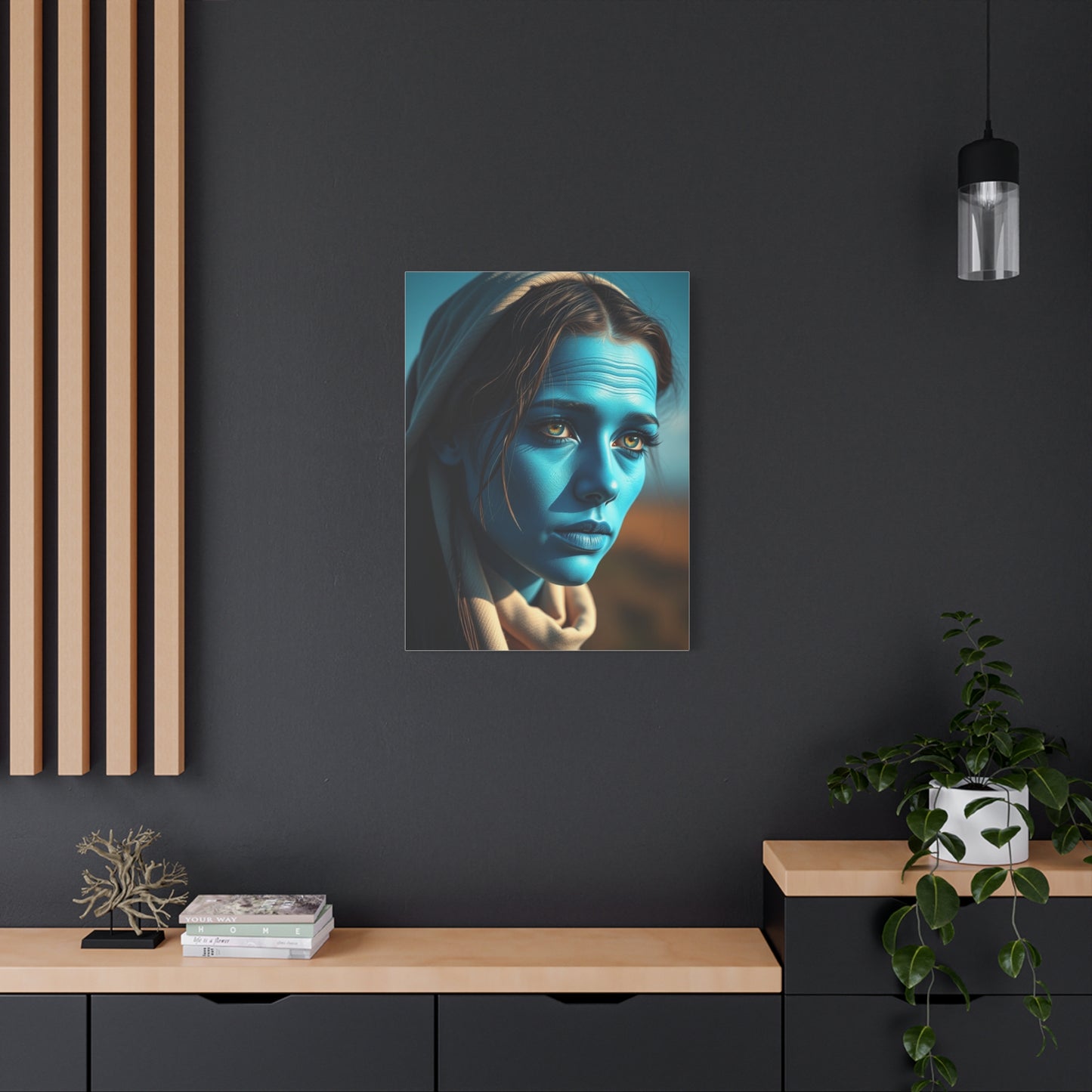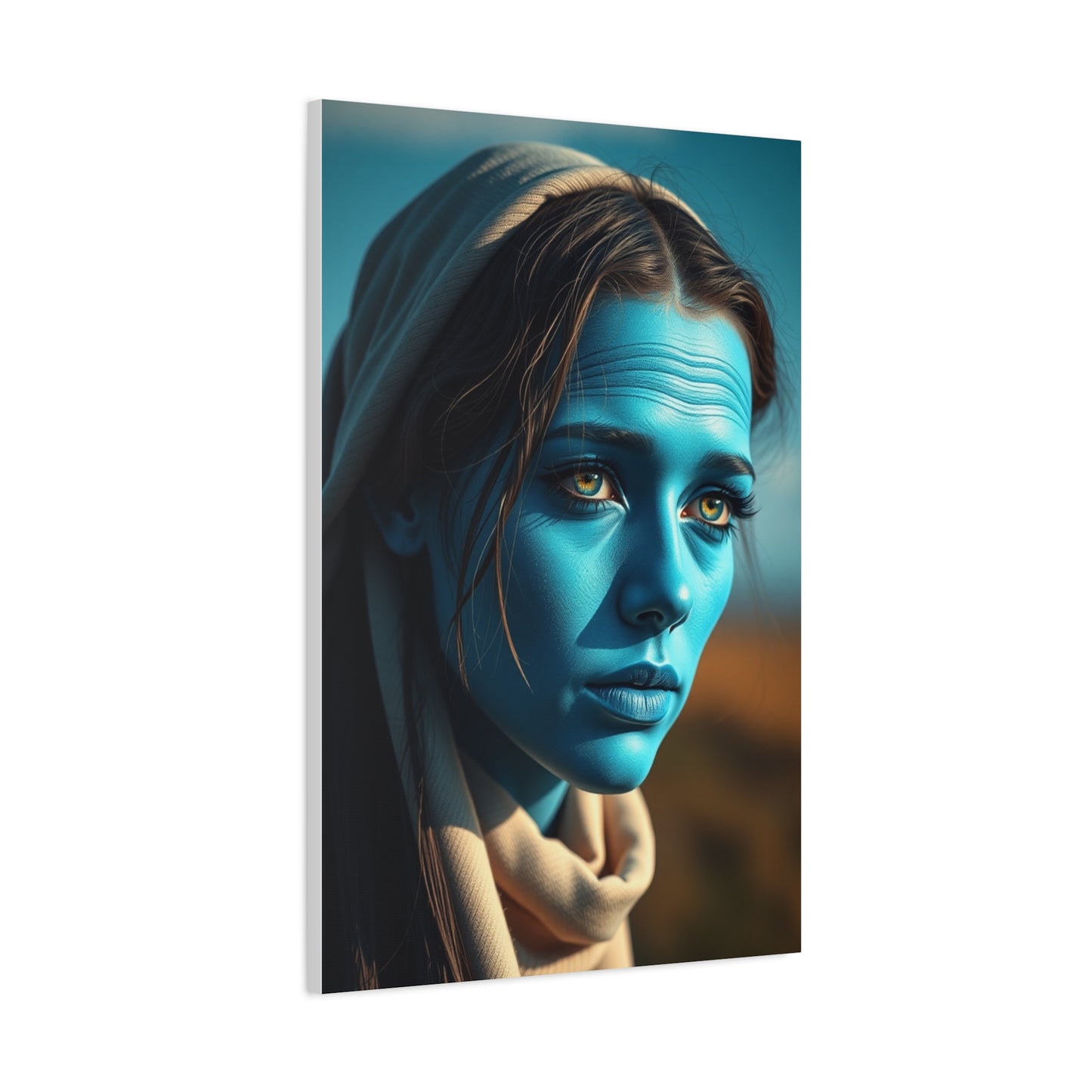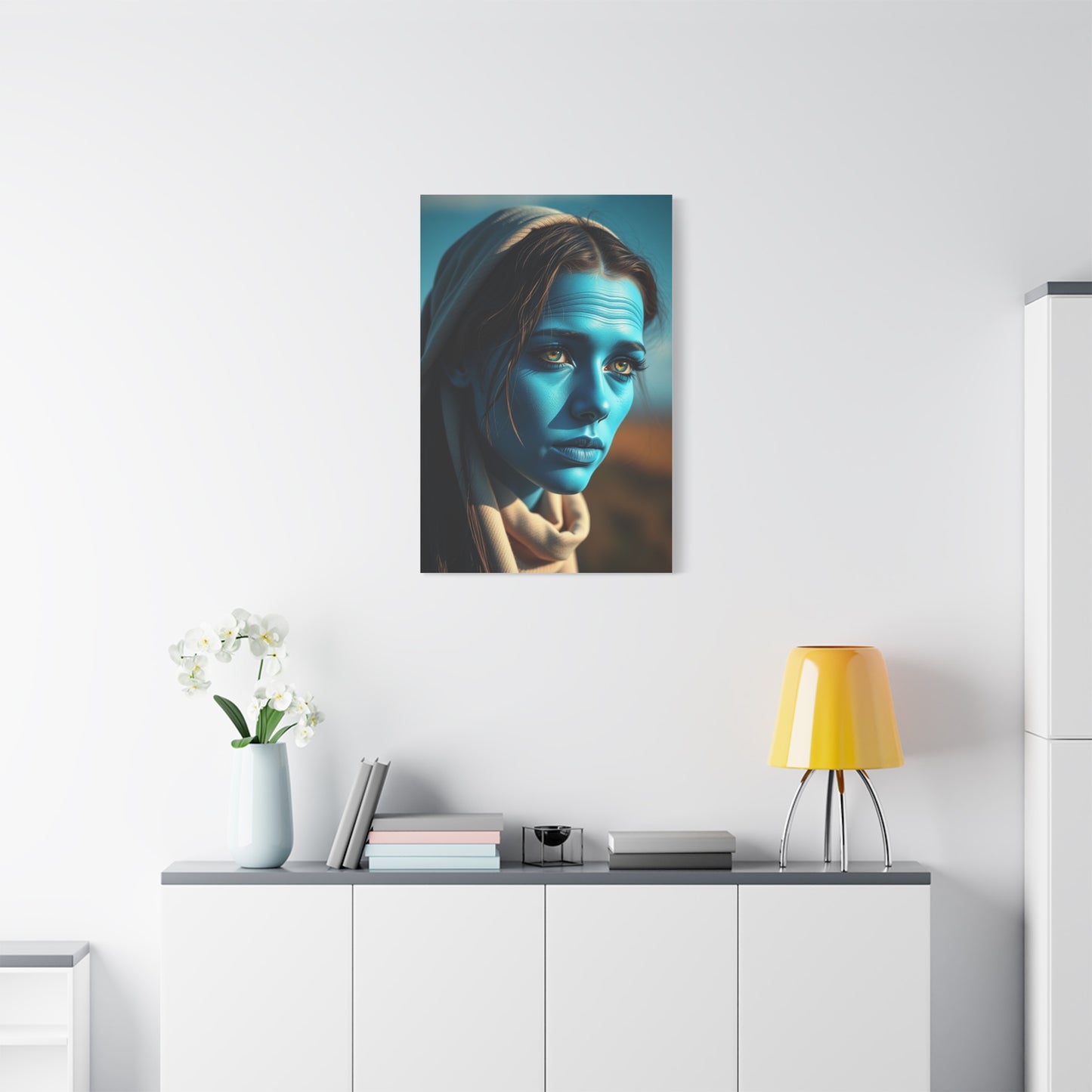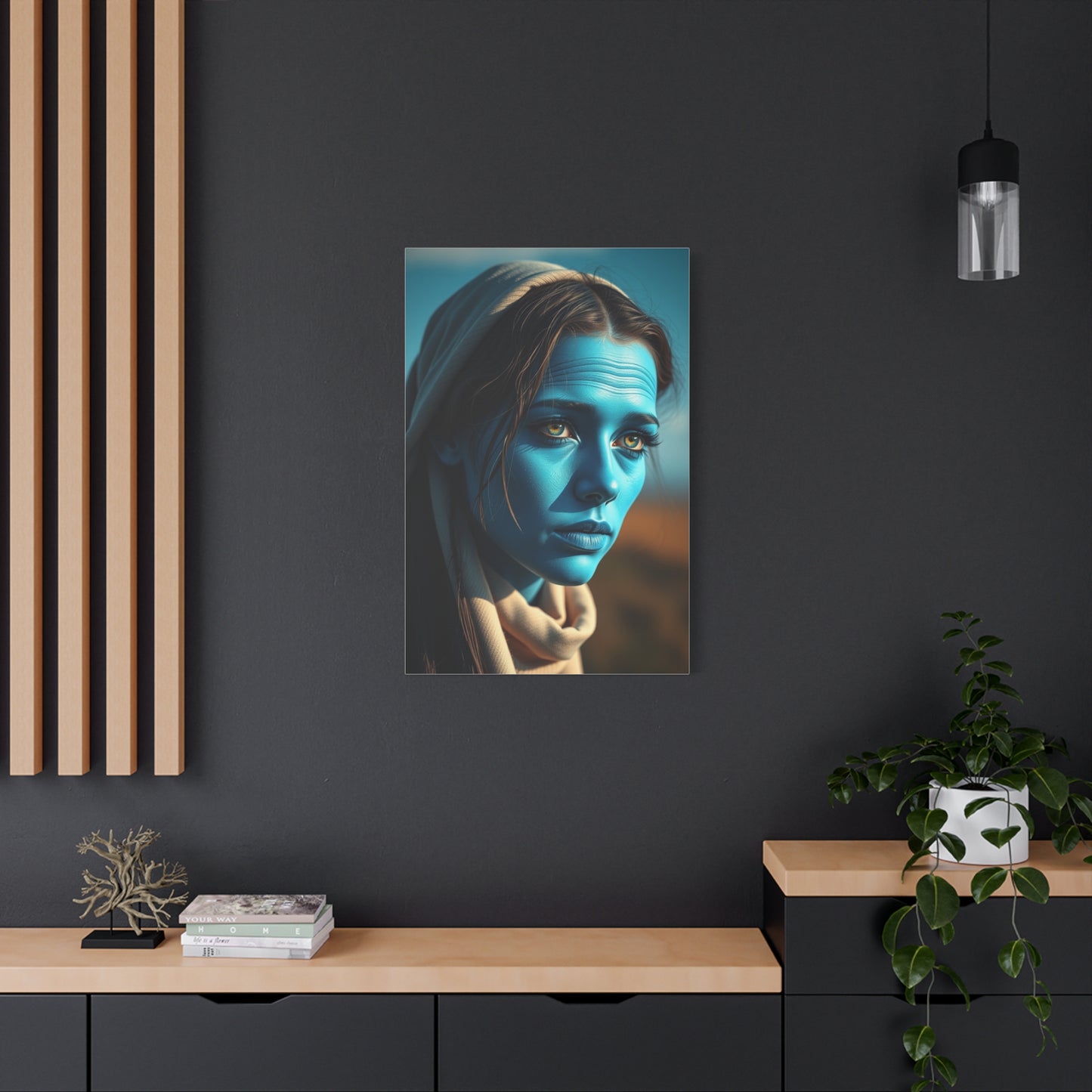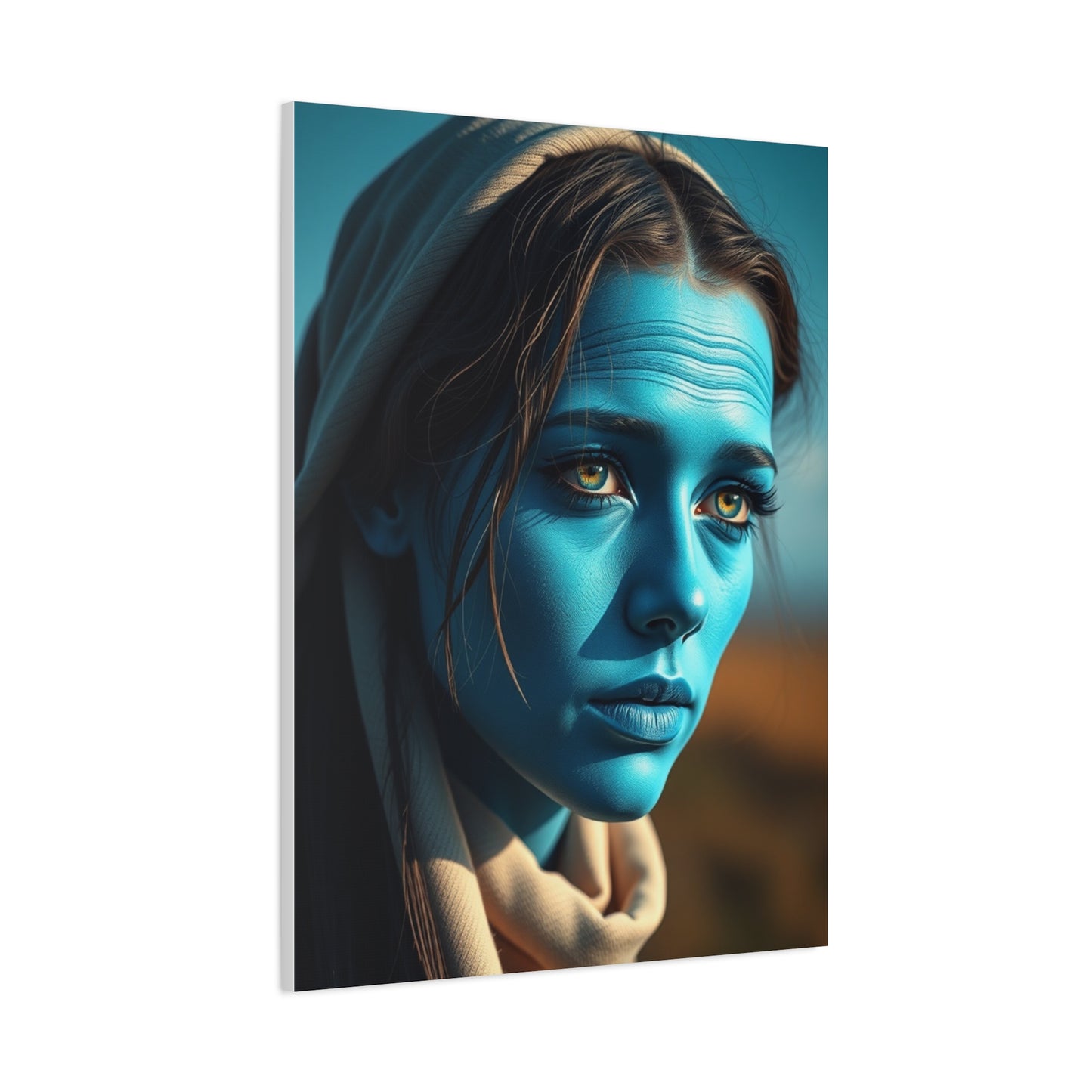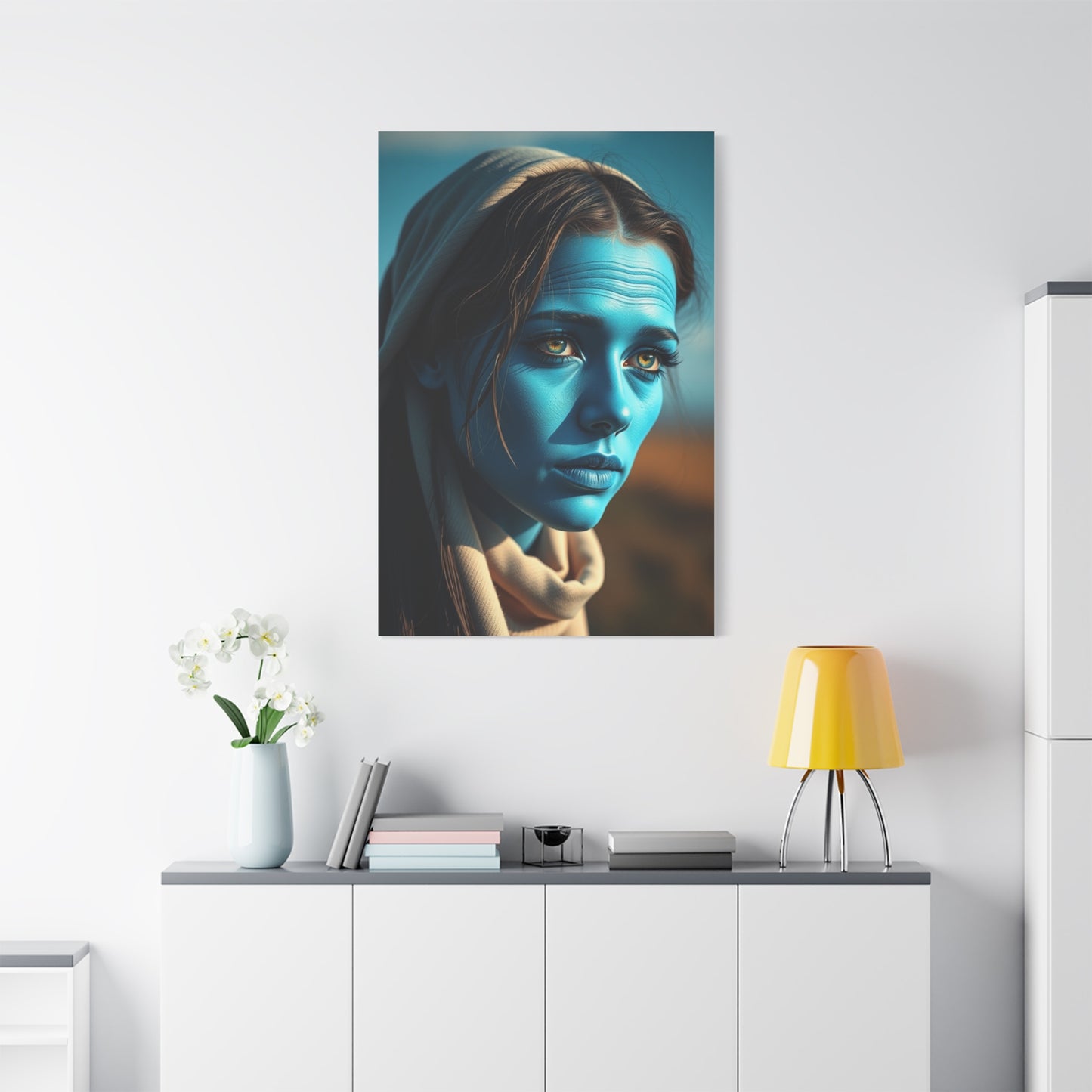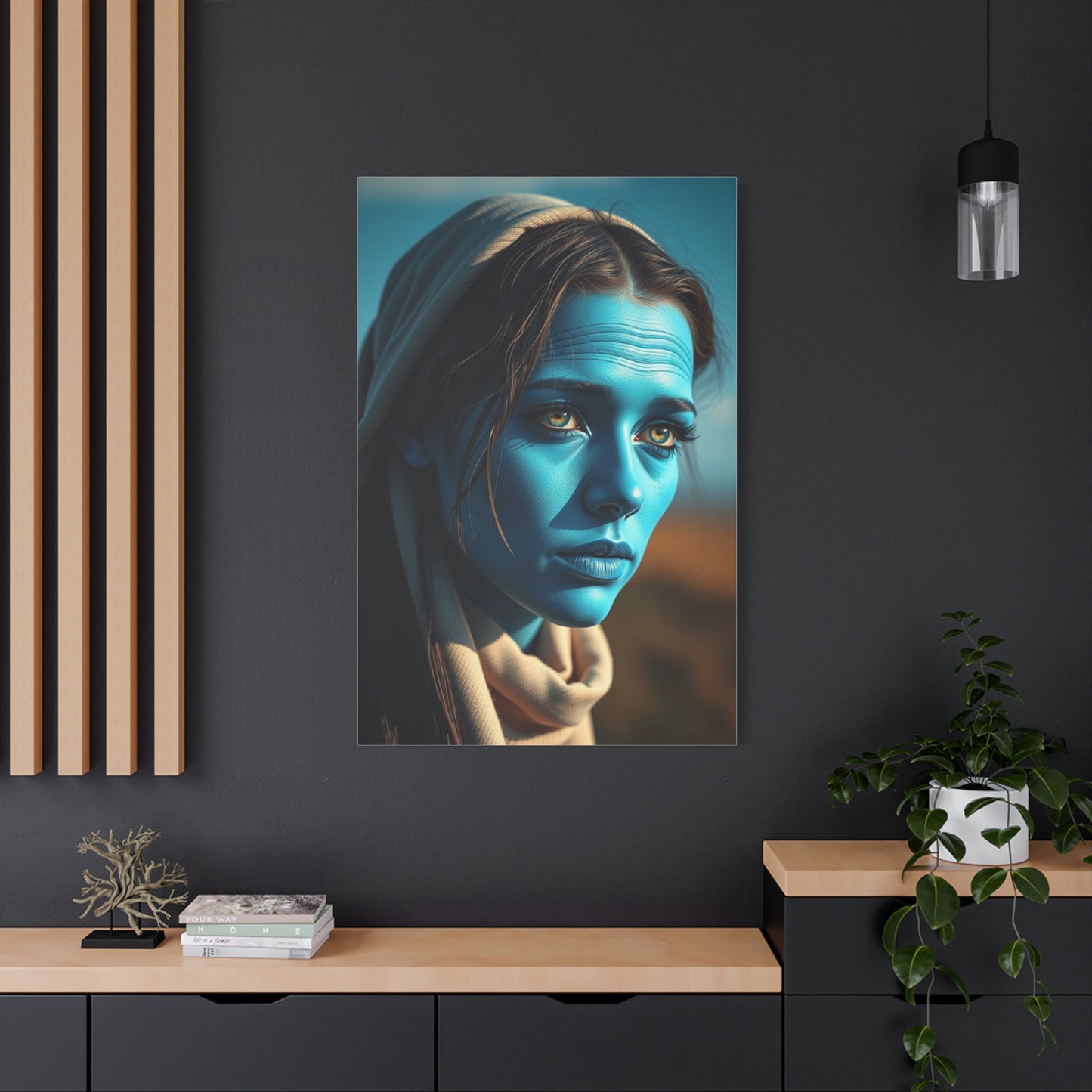Celestial Azure Gallery Wall Art: Infuse Your Space with Cosmic Beauty and Tranquility
The art world has witnessed countless trends come and go, but few possess the timeless elegance and universal appeal of celestial-inspired designs. When you merge the infinite beauty of the cosmos with the calming depths of azure hues, you create something truly extraordinary. This fusion results in artwork that transcends mere decoration, becoming a portal to the mysteries of the universe right within your living space. The mesmerizing quality of these pieces lies in their ability to capture both the grandeur of celestial bodies and the intimate tranquility of a moonlit night, all rendered in stunning shades of blue that range from the palest sky to the deepest midnight.
Decorating your home is about more than simply filling empty walls—it's about creating an environment that reflects your personality, soothes your spirit, and inspires your imagination. Whether you're drawn to the scientific wonder of astronomy, the spiritual symbolism of heavenly bodies, or simply the aesthetic beauty of blue tones, these artistic creations offer something meaningful for everyone. They serve as conversation starters, meditation focal points, and constant reminders of the vast beauty that exists beyond our everyday concerns. The visual impact of these designs can transform an ordinary room into a sanctuary of contemplation and peace.
In this comprehensive exploration, we'll journey through the many facets of incorporating sky-inspired azure artwork into your interior design. From understanding why these pieces resonate so deeply with modern sensibilities to discovering practical styling techniques for every room in your home, this guide will illuminate the path to creating spaces that feel both grounded and transcendent. We'll examine how these artworks function within various design philosophies, explore their psychological effects, and provide detailed guidance on selecting and displaying pieces that will elevate your environment. Whether you're a seasoned collector or someone just beginning to curate your personal gallery, you'll find inspiration and practical wisdom in the pages ahead.
Bringing the Night Sky to Your Walls with Azure Cosmic Art
There exists something profoundly moving about gazing upward into the night sky, where countless stars twinkle against the velvet darkness and planets trace their ancient paths across the heavens. This primal connection to the cosmos has inspired humanity since the dawn of consciousness, from the earliest cave paintings depicting celestial events to the sophisticated astronomical charts of medieval scholars. Today, you can capture that same sense of wonder and bring it into your daily life through carefully chosen artistic representations that celebrate the beauty of the universe.
The magic of night sky artwork lies in its ability to compress the infinite into a manageable frame, allowing you to contemplate the vastness of space from the comfort of your home. These pieces often feature swirling galaxies rendered in deep blues and purples, constellations mapped with silvery precision, or abstract interpretations of cosmic phenomena that spark the imagination. The color palette dominated by azure tones creates an immediate sense of depth and mystery, drawing the eye inward and encouraging extended contemplation. Unlike more aggressive or busy artwork, these designs invite you to pause, breathe, and lose yourself in their depths.
When you introduce these elements into your interior spaces, you're not simply adding decoration—you're creating windows to other worlds. The psychological impact of surrounding yourself with imagery of the night sky can be surprisingly profound. Many people report feeling calmer, more contemplative, and more connected to something larger than themselves when living with such artwork. This isn't merely poetic fancy; research into color psychology and biophilic design suggests that images of natural phenomena, particularly the sky and cosmos, can reduce stress hormones and promote mental clarity. The expansive nature of these visuals can help counteract feelings of confinement that often accompany modern urban living.
The technical execution of quality sky-inspired pieces requires considerable artistic skill. Whether created through traditional painting techniques, digital illustration, or photographic manipulation, the best examples demonstrate a mastery of light, shadow, and atmospheric perspective. Artists working in this genre must understand how to layer colors to create depth, how to suggest the glow of distant stars without overwhelming the composition, and how to balance detail with suggestion. The azure palette offers particular challenges and opportunities, as blue pigments can appear flat without proper handling but create extraordinary luminosity when applied with understanding. Gradients that shift from near-black at the edges to lighter tones toward a focal point can create the illusion of gazing into actual space.
Contemporary interpretations of night sky imagery have evolved beyond literal astronomical representations to include more abstract and stylized approaches. Some artists incorporate metallic accents that catch the light and create a sense of shimmer reminiscent of distant stars. Others blend traditional astronomical accuracy with imaginative elements, perhaps adding mythological figures or symbolic geometry that connects earthly wisdom with cosmic mysteries. This evolution reflects our changing relationship with the heavens—no longer worshiping celestial bodies as gods, yet still finding them sources of inspiration and meaning. The artwork becomes a bridge between scientific understanding and emotional response, acknowledging both the measurable reality of astrophysics and the unmeasurable experience of awe.
Installation considerations for these pieces matter more than you might initially think. The way light interacts with the artwork throughout the day can dramatically affect its impact. Natural light streaming through windows will reveal different nuances in the colors and details than artificial lighting provides. Evening illumination from lamps creates an entirely different atmosphere, sometimes making the artwork feel as though it's glowing from within. Many collectors position these pieces where they'll be visible during evening hours, when the psychological connection to the actual night sky feels strongest. The artwork then serves as an extension of the darkness beyond your windows, a curated and accessible version of the cosmic display happening overhead.
Scale plays a crucial role in achieving the desired effect. A small print might serve well as part of a gallery wall, contributing to an overall theme without dominating attention. However, larger statement pieces that span several feet can create truly immersive experiences, especially when positioned at eye level where you naturally meet the artwork while standing or seated. The goal is to create sufficient visual presence that the piece draws you in without overwhelming the space or making the room feel cramped. In open-concept homes, a substantial sky-inspired artwork can serve as a visual anchor that helps define different zones within a larger area.
The emotional resonance of night sky artwork varies depending on personal experiences and cultural background, but certain themes appear nearly universal. The sense of wonder at contemplating our place in the cosmos, the calming effect of blue tones, and the appeal of beauty that exists independent of human concerns all contribute to these pieces' broad appeal. For some viewers, the artwork connects to childhood memories of stargazing or camping trips. For others, it represents aspirations toward exploration and discovery. Still others appreciate the reminder that our daily concerns exist within a much larger context, offering perspective during challenging times. This multiplicity of meaning allows the same piece to speak differently to various individuals while maintaining its aesthetic integrity.
Why Azure Cosmic Art Fits Perfectly in Modern Spaces
Contemporary interior design has undergone a remarkable evolution over recent decades, moving away from the ornate maximalism of earlier eras toward approaches that emphasize clean lines, uncluttered surfaces, and intentional choices. Within this aesthetic framework, every element must earn its place by serving both functional and emotional purposes. The modern home is conceived as a carefully curated environment where less truly becomes more, and where each item contributes meaningfully to the overall atmosphere. In this context, artwork inspired by the azure cosmos emerges as an ideal choice that satisfies multiple design criteria simultaneously.
The minimalist philosophy that dominates much of modern design finds a natural ally in sky-themed artwork featuring predominantly blue palettes. These pieces provide necessary visual interest without introducing the chaos of competing colors or overly busy patterns. The organic nature of cosmic imagery—with its flowing nebulae, scattered star fields, and sweeping gradients—offers a pleasing contrast to the geometric precision of contemporary furniture and architecture. Where straight lines and right angles define the built environment, the curves and irregular forms of galaxies and celestial phenomena introduce a softer, more human element. This balance between order and organic flow creates spaces that feel both sophisticated and livable.
Color coordination represents one of the primary challenges in modern interior design, where maintaining a cohesive palette across furnishings, accessories, and artwork requires careful planning. Azure-dominated artwork offers exceptional versatility in this regard. Blue exists as a universally compatible color that harmonizes beautifully with the neutral tones that form the foundation of most contemporary spaces—whites, grays, taupes, and blacks all complement various shades of blue. Additionally, blue provides sophisticated contrast with warm accent colors like brass, copper, or gold, which frequently appear in modern light fixtures, hardware, and decorative objects. The cooling effect of blue tones also balances warmer wood elements that many designers incorporate to prevent modern spaces from feeling too clinical.
The scale and composition typical of quality cosmic artwork align perfectly with the spatial proportions of contemporary architecture. Modern homes often feature substantial walls with minimal interruption—no crown molding, chair rails, or other historical architectural details that might compete with artwork. These expansive surfaces practically demand statement pieces with sufficient visual weight to anchor the space without requiring multiple smaller items. A single large-format piece depicting the azure depths of space can serve this function beautifully, providing a focal point that draws the eye and gives purpose to an otherwise blank expanse. The horizontal orientation of many cosmic compositions also complements the long, low furniture profiles favored in modern design.
Contemporary design principles emphasize the importance of connection to the natural world, even within urban environments where direct access to nature may be limited. This biophilic design approach recognizes that humans possess an innate need for contact with natural elements and patterns. While we might not traditionally think of outer space as part of the natural world in the same way as forests or oceans, the cosmos represents nature at its most fundamental and awe-inspiring. Bringing representations of the night sky into interior spaces satisfies this biophilic urge by connecting us to the grandest natural spectacle of all. The psychological benefits mirror those associated with nature imagery—reduced stress, improved mood, and enhanced cognitive function.
The technological aesthetic of many modern homes, with their smart devices, minimalist electronics, and sleek appliances, finds an interesting counterpoint in cosmic artwork. While thoroughly natural in subject matter, images of space also evoke themes of exploration, technology, and human achievement. This duality allows the artwork to bridge seemingly disparate elements of contemporary life. For professionals in technology, science, or innovative fields, cosmic imagery can reinforce their identity and values. The artwork becomes a subtle statement about curiosity, progress, and the pursuit of knowledge—qualities that resonate strongly with modern sensibilities.
Lighting design in contemporary spaces has become increasingly sophisticated, with attention paid to color temperature, directional effects, and the interplay between ambient, task, and accent illumination. Azure cosmic artwork responds beautifully to thoughtful lighting strategies. Cool-toned LED strips or track lighting can enhance the depth and luminosity of the blue palette, making the artwork appear almost backlit. Smart lighting systems allow you to adjust the intensity and angle of illumination throughout the day, revealing different aspects of the piece and creating varied atmospheres. During evening hours, dimmed lighting can make the stars within the artwork seem to glow more prominently, enhancing the sense of peering into actual space.
The open-concept floor plans favored in modern architecture present particular decorating challenges, as large undivided spaces require visual strategies to define different functional zones without erecting physical barriers. Substantial cosmic artwork can serve this purpose effectively, acting as a visual marker that signals a transition from living area to dining space, or from entryway to main room. The artwork becomes a landmark within the open space, providing orientation and helping to organize the flow of traffic and sight lines. Because blue tones tend to recede visually rather than advance, the artwork defines space without creating harsh divisions or making areas feel closed off.
Modern homeowners increasingly value authenticity and meaning in their possessions, rejecting purely decorative items in favor of pieces that express personal values or interests. Cosmic artwork satisfies this desire for meaningful decoration by connecting to larger themes—our place in the universe, the beauty of natural laws, the human drive to explore and understand. These pieces invite conversation and contemplation rather than simply filling space. When guests inquire about the artwork, it provides an opportunity to discuss interests in astronomy, philosophy, or simply appreciation for natural beauty. The artwork becomes part of your personal narrative rather than generic decoration.
Transform Your Space with Azure Gallery Art
Transformation represents more than simple change—it suggests fundamental alteration that affects not just appearance but also function and feeling. When you thoughtfully incorporate gallery-quality azure cosmic artwork into your environment, you initiate precisely this kind of comprehensive transformation. The space evolves from merely functional to emotionally resonant, from generic to personally meaningful, from ordinary to extraordinary. Understanding how this transformation occurs and how to facilitate it requires attention to multiple elements working in concert.
Gallery art distinguishes itself from mass-produced decoration through several key characteristics: originality of conception, quality of execution, archival materials that ensure longevity, and presentation standards that honor the work. When you invest in true gallery pieces rather than disposable decor, you're making a statement about your values and your relationship to your environment. These aren't temporary placeholders but considered additions to your life that will reward continued attention over years or decades. The transformation they facilitate therefore extends beyond the immediate visual impact to affect how you understand and inhabit your space over the long term.
The first step in transformation involves assessment of your existing space—its dimensions, light quality, color palette, and intended function. A room suffering from insufficient natural light might benefit tremendously from artwork featuring lighter azure tones and perhaps metallic or reflective elements that help bounce available light around the space. Conversely, a sun-flooded room can handle deeper, more saturated blues without appearing gloomy. The architectural features present also matter; high ceilings allow for vertically-oriented pieces that draw the eye upward and emphasize the room's proportions, while horizontal compositions can make narrow spaces feel wider.
Color psychology plays a significant role in how artwork transforms space. The azure family of blues possesses specific psychological properties that designers have long recognized and utilized. Lighter, clearer blues evoke sky and open space, creating feelings of freedom, clarity, and possibility. They can make small rooms feel larger and crowded spaces less oppressive. Medium blues suggest stability, trustworthiness, and calm—these tones work beautifully in spaces meant for concentration or relaxation. Deeper midnight blues introduce elements of mystery, luxury, and introspection. They add drama and sophistication to social spaces while promoting rest in bedrooms. Understanding these subtle psychological effects allows you to select pieces that support your intentions for each space.
The physical act of installing gallery-quality artwork should never be rushed or treated casually. Proper hanging height follows the principle that the center of the artwork should sit at approximately fifty-eight to sixty inches from the floor—the average eye level in galleries and museums. This placement ensures comfortable viewing whether you're standing or seated. For artwork intended to be viewed primarily while seated, such as pieces above sofas or headboards, the center point might drop to between forty-eight and fifty-two inches. Horizontal alignment with other elements in the room—windows, furniture, doorways—creates visual harmony that feels intuitively right even if viewers don't consciously register the alignment.
Framing and matting decisions significantly impact how artwork transforms a space. Gallery-standard framing uses materials that protect the artwork while enhancing its presentation. For cosmic imagery in azure tones, several approaches work well. Clean-lined metal frames in silver, white, or black create contemporary looks that emphasize the artwork itself. Deep-set frames that create a shadow box effect add dimensionality and importance to the piece. If the artwork includes very dark passages, a mat in off-white or light gray can prevent the piece from feeling heavy while providing breathing room between the image and frame. For more dramatic presentations, floating mounts that make the artwork appear to hover within the frame create striking effects.
Grouping strategies offer another avenue for transformation, particularly in larger spaces that can accommodate multiple pieces. Rather than scattering artwork randomly across available wall space, consider creating intentional groupings that form a cohesive gallery wall. When working with cosmic-themed pieces, you might combine various scales and orientations while maintaining the azure color theme as a unifying element. The constellation approach places smaller pieces around a central, larger work, mimicking the arrangement of stars around bright central bodies. The grid method aligns multiple same-sized pieces in orderly rows and columns for a more structured, contemporary look. The organic arrangement allows pieces of various sizes to interact more freely, with spacing and alignment creating visual rhythms rather than following strict rules.
Transformation through artwork extends beyond purely visual effects to influence the acoustic and energetic qualities of space. Large canvases or prints behind glass can actually affect room acoustics, absorbing or reflecting sound waves in ways that change how the space feels. Highly reflective glass might create unwanted glare from certain angles, while non-reflective museum glass maintains visibility under varied lighting conditions. The presence of substantial artwork also affects how energy moves through a room from a design perspective. The artwork becomes a landmark that influences furniture arrangement, traffic patterns, and the natural stopping points where people pause and focus their attention.
Seasonal considerations affect how cosmic artwork transforms space throughout the year. During summer months when daylight extends into evening hours, the artwork might appear as a cool, refreshing contrast to bright outdoor conditions visible through windows. In winter, when darkness arrives early and natural light grows scarce, the same artwork can provide companionship and beauty during long evenings, its depths inviting contemplation as a counterpoint to the cold darkness outside. Some collectors enjoy adjusting accent lighting or even swapping pieces seasonally to maintain fresh visual interest and connection to the changing world beyond their walls.
The transformative power of quality artwork compounds over time as you develop a relationship with the piece. Initially, you notice the overall impact—the colors, the composition, the immediate emotional response. With continued viewing, subtler details emerge: variations in tone you hadn't perceived, compositional choices that reveal themselves gradually, symbolic or representational elements that gain meaning through repeated encounters. This deepening relationship with the artwork means the transformation it facilitates continues evolving. Your space doesn't simply look different; it becomes a place of ongoing discovery and reflection. The investment in quality pieces that reward extended attention pays dividends far beyond their initial impact.
Azure Cosmic Art as a Bold Statement for Your Living Room
The living room occupies a unique position in the home as the primary space for both family relaxation and social gathering. It's where you unwind after challenging days, where you entertain friends, where conversations unfold and relationships deepen. Given these multiple functions, the decor you choose for this space carries particular significance. It should reflect your personality while remaining welcoming to others, provide visual interest without overwhelming, and create an atmosphere that supports both energetic socializing and quiet reflection. Azure cosmic artwork meets these complex requirements with remarkable effectiveness.
Making a bold statement through artwork requires confidence—confidence in your taste, in the piece itself, and in its relationship to the surrounding environment. Boldness doesn't necessarily mean loudness or aggression; rather, it suggests presence, decisiveness, and impact. A statement piece commands attention without demanding it, drawing the eye through inherent beauty and interest rather than through shock or incongruity. When selecting cosmic-themed artwork for your living room, look for pieces with sufficient scale and visual weight to anchor the space. A work spanning four to six feet in width possesses the presence necessary to serve as a room's focal point, establishing a clear hierarchy among visual elements.
Color saturation plays a crucial role in determining how bold a piece appears. While the azure palette tends toward cooling and calming effects, higher saturation levels introduce energy and vibrancy without sacrificing sophistication. A cosmic scene rendered in rich, deep blues with contrasting lighter elements creates dramatic visual impact. The interplay between the darkest passages—perhaps representing the depths of space—and lighter areas depicting nebulae, starlight, or celestial bodies generates internal contrast that keeps the eye engaged and moving across the composition. This movement prevents the artwork from becoming static or dull despite its calming color family.
Positioning your statement piece requires strategic thinking about sight lines and focal points. In most living rooms, one wall naturally serves as the primary viewing surface—often the wall opposite the main entrance or the wall behind the sofa. Placing your cosmic artwork here ensures it receives maximum attention and can fulfill its role as the room's visual anchor. The piece should relate proportionally to the furniture beneath or around it; a common guideline suggests artwork above a sofa should span roughly two-thirds to three-quarters of the sofa's width. This relationship creates visual harmony and makes the arrangement feel intentional rather than arbitrary.
The surrounding decor should support rather than compete with your statement artwork. This doesn't mean the rest of the room should fade into insignificance, but rather that other elements should operate at a different visual register. If your cosmic artwork provides bold color and sweeping organic forms, balance it with furniture in more neutral tones and cleaner lines. Accessories like throw pillows, area rugs, or curtains might pick up accent colors from the artwork—perhaps a lighter blue or silver—creating subtle echoes that unify the space without duplicating the artwork's impact. The goal is layered visual interest where each element has its role without creating cacophony.
Lighting strategy dramatically affects how statement artwork performs its function. Track lighting or picture lights directed at the piece ensure it remains visible and impactful even during evening hours when natural light fades. The angle of illumination matters; light hitting the artwork from above at a forty-five-degree angle minimizes glare while providing even coverage. Dimmable lights allow you to adjust the artwork's prominence depending on the occasion—brighter for social gatherings where you want it to spark conversation, softer for quiet evenings when ambiance takes priority. Some homeowners install accent lights on separate switches from general room lighting, providing maximum control over the visual environment.
The conversational potential of bold cosmic artwork shouldn't be underestimated. Guests will naturally comment on striking pieces, providing easy entry points for deeper discussions. The artwork might lead to conversations about astronomy, favorite vacation spots with dark skies suitable for stargazing, philosophical questions about our place in the universe, or simply shared appreciation for beauty. These organic conversation starters help guests feel comfortable and give them permission to engage with your space and, by extension, with you. In social situations where people might feel uncertain about appropriate topics, beautiful artwork provides neutral yet engaging ground for interaction.
Maintenance of your statement piece ensures it continues performing its function over time. Dust accumulation on frames and glass, fading from prolonged sun exposure, or settling of the artwork within its hanging hardware can all diminish impact. Regular gentle cleaning with appropriate materials preserves the piece's appearance. Rotating artwork seasonally or annually prevents light damage to any single piece while keeping your environment fresh. For particularly valuable works, professional conservation cleaning every few years removes accumulated grime that household methods can't address safely. These maintenance practices represent respect for the artwork and for the role it plays in your living environment.
Balancing boldness with cohesion across your entire home requires some forethought. While your living room statement piece should have presence, it shouldn't clash violently with the aesthetic of adjacent spaces. Consider how the artwork relates to what's visible from hallways or dining areas. The cosmic theme and azure palette might extend subtly into other areas through smaller accent pieces, textiles, or decorative objects that create a thread of continuity without rigid matching. This approach maintains each room's distinct identity while building a coherent overall environment that feels intentionally designed rather than randomly assembled.
The psychological impact of living with bold cosmic artwork extends beyond the immediate visual pleasure. Over time, the presence of such a piece can actually influence how you think about your life and priorities. The artwork serves as a daily reminder of beauty, vastness, and perspective. During stressful periods, glancing at the cosmic depths can provide momentary escape and recalibration. The piece becomes woven into your daily rituals and memories, present in the background of countless moments—morning coffee, evening conversations, solitary reflection. This accumulation of shared experiences with the artwork deepens its meaning and justifies the investment of resources and wall space required to make such a bold statement.
Incorporating the Magic of the Sky with Azure Cosmic Art
Magic represents that quality of wonder and enchantment that transcends rational explanation, touching something deep within our emotional and imaginative nature. The sky has always held magical significance for humanity—a realm beyond our reach yet constantly visible, home to phenomena that inspired myths, guided navigation, and prompted fundamental questions about existence. Incorporating this inherent magic into your living space through thoughtful artwork choices creates environments that nurture not just physical comfort but also spiritual and emotional wellbeing.
The particular magic of sky-themed artwork lies in its ability to compress infinite space into a comprehensible frame. When you gaze at quality cosmic art, you're simultaneously aware that you're viewing a representation while also experiencing a genuine connection to the vastness it depicts. This dual consciousness creates a unique viewing experience where imagination and reality interweave. The best pieces maintain this tension beautifully, offering enough realistic detail to ground the viewer while including sufficient stylization or interpretation to activate the imagination. The result feels almost like viewing the actual sky through a window, except this window offers a perfected, curated view that captures an ideal moment.
Incorporating magic doesn't mean abandoning sophistication or maturity. The wonder evoked by quality cosmic artwork appeals across age ranges and personality types. A scientifically-minded individual might appreciate the accurate rendering of astronomical phenomena, the careful attention to how light behaves in the vacuum of space, or the authentic color palette derived from actual telescope imagery. A more spiritually-oriented person might respond to the sense of connection to something greater than themselves, the reminder of mystery that persists despite scientific advancement, or symbolic interpretations of cosmic imagery. Children experience direct, unselfconscious delight in the beauty and the imagination of distant worlds. This universal appeal makes cosmic artwork particularly valuable in family spaces.
The azure color family carries its own magical associations drawn from centuries of cultural symbolism. Blue represents water, sky, and spiritual realms across diverse traditions. It suggests depth, both literal and metaphorical—the depths of the ocean, the depths of space, the depths of consciousness and emotion. Lighter blues evoke daytime sky and clarity, while darker shades suggest nighttime mystery and the unknown. This rich symbolic vocabulary operates beneath conscious awareness, affecting how we respond to the artwork without requiring explicit understanding. The magic works partly because we're not fully conscious of all the mechanisms through which it operates.
Seasonal variations in the actual sky can be honored and extended through your display choices. During spring and summer, when natural daylight abounds and outdoor activities increase, cosmic artwork provides a counterpoint—a reminder that the bright daytime sky transforms into star-filled wonder each night. In autumn and winter, when darkness arrives early and weather often keeps us indoors, the artwork offers comfort and beauty, bringing the hidden nighttime sky into your lived environment. Some collectors enjoy having multiple pieces they rotate with the seasons, perhaps favoring lighter compositions during summer and deeper, more mysterious works during winter months.
The technical execution of magical effects in cosmic artwork requires considerable skill. Artists working in this genre must master techniques for depicting light sources, atmospheric effects, and the unique visual qualities of objects in space. The glow around stars demands understanding of how light diffracts and how to render that effect in two dimensions. The subtle variations in nebula clouds require layering techniques and color theory knowledge. The sense of infinite depth must be constructed through careful use of atmospheric perspective, scale relationships, and detail density. When these technical elements align successfully, the result appears effortless and natural—the mark of true mastery that enhances the magical quality rather than calling attention to itself.
Interactive elements can heighten the magical experience of cosmic artwork. Some contemporary pieces incorporate elements that respond to changing light conditions, perhaps containing phosphorescent materials that glow softly when lights dim. Others use holographic or lenticular printing techniques that create the illusion of depth or movement as viewing angle changes. While such techniques risk gimmickry if poorly executed, thoughtful implementation can genuinely enhance the sense of magic and wonder. These approaches particularly appeal to younger viewers while offering enough sophistication to please adult sensibilities as well.
The magic of cosmic artwork extends to its ability to facilitate altered states of consciousness conducive to creativity, problem-solving, and emotional processing. Contemplating the depths of space represented in the artwork can induce a light meditative state, where everyday concerns temporarily recede and broader perspectives emerge. Many people report that spending time with cosmic imagery helps them think more creatively, approach problems from new angles, or simply feel calmer and more centered. While these effects might have neurological explanations related to color psychology and attention states, the experiential quality remains genuinely magical—a shift in awareness that feels both mysterious and beneficial.
Creating rituals around your cosmic artwork amplifies its magical qualities and deepens your relationship with the piece. Perhaps you make a habit of pausing before the artwork with your morning coffee, using the moment for reflection or intention-setting. Maybe you invite guests to share their first impressions of the piece, creating a small ritual of engagement that enriches social gatherings. You might coordinate the artwork with actual stargazing activities, consulting astronomical charts to identify which celestial features appear in the artwork and then seeking them in the actual night sky. These practices transform the artwork from passive decoration into an active element of your life, increasing its meaning and impact.
How to Style Azure Cosmic Wall Art in Your Bedroom
The bedroom occupies a unique place in our homes as the most private and personal space, devoted primarily to rest, reflection, and renewal. Unlike public areas where we accommodate others' needs and preferences, the bedroom allows us to design purely for ourselves, creating an environment that supports our best sleep and most authentic relaxation. Given these functions, the decor choices we make for bedrooms carry special significance. They should promote calm rather than stimulation, support circadian rhythms rather than disrupting them, and create atmospheres where we can truly let down our guard.
Azure cosmic artwork aligns naturally with bedroom requirements through both its color palette and its thematic content. The blue family of colors has been extensively studied for its effects on human physiology and psychology. Research consistently shows that exposure to blue tones can lower blood pressure, reduce heart rate, and decrease feelings of anxiety—all physiological changes that support falling asleep more easily. The calming effect doesn't induce drowsiness inappropriately during waking hours but rather reduces the hyperarousal that often prevents quality rest. Incorporating these tones into your sleep environment through thoughtful artwork choices supports your body's natural transition toward sleep states.
Placement considerations for bedroom artwork differ from those in social spaces. The wall opposite the bed provides an excellent location, as this becomes the natural focus when you first wake—your initial visual impression of the day. Starting each morning by gazing at cosmic beauty can set a contemplative, positive tone that influences your entire day. Alternatively, the wall behind the bed creates impact visible from the doorway while remaining outside your direct line of sight when in bed, preventing the artwork from providing too much stimulation when you're trying to wind down. The wall to the side might serve those who sleep on one side of the bed and enjoy having the artwork visible while lying down.
Scale becomes particularly important in bedrooms, which are often smaller than main living areas. Oversized artwork can overwhelm a modest bedroom, making the space feel cramped and unrestful. Conversely, pieces too small for the space feel insignificant and fail to create the desired atmosphere. For artwork above a headboard, aim for pieces ranging from two-thirds to three-quarters the width of the bed. For walls without furniture beneath, consider your room proportions and select pieces that fill approximately one-third to one-half of the available wall space. These guidelines create visual balance that feels comfortable rather than extreme in either direction.
The specific imagery within cosmic artwork matters for bedroom settings. Scenes depicting calm, open space feel more restful than busy compositions crowded with detail. Deep space vistas showing stars scattered across velvet darkness promote relaxation better than images of explosive supernovae or colliding galaxies. The psychological principle at work relates to visual complexity and the cognitive load it creates. Simpler compositions allow the mind to rest, while complex images—however beautiful—continue engaging active attention. For bedrooms, favor artwork that invites gentle contemplation rather than demanding detailed examination.
Color saturation levels affect the artwork's suitability for sleep spaces. Highly saturated, vibrant blues provide energy and excitement—desirable in social spaces but potentially counterproductive in bedrooms. Instead, look for pieces featuring softer, more muted tones that maintain interest without overstimulation. Artwork incorporating gradients from deep midnight blue to lighter periwinkle or pale sky blue creates depth and interest while maintaining the calming effects necessary for rest. The inclusion of white or silver elements representing stars or nebulae can add visual interest without introducing jarring color contrasts.
Lighting strategy becomes especially critical in bedrooms, where you need varied light levels for different activities—brighter illumination for dressing or reading, softer light for evening relaxation, and minimal light for sleep itself. Your cosmic artwork should remain visible under varied lighting conditions without creating glare or excessive brightness. Consider installing dedicated picture lighting on a dimmer switch, allowing you to showcase the artwork when desired while keeping the space dark enough for quality sleep. Avoid positioning artwork where it reflects light from bedside lamps directly into your eyes, as this creates discomfort and defeats the purpose of choosing calming artwork.
Textural elements in your bedroom can be coordinated with cosmic artwork to create a cohesive sensory environment. Bedding in complementary shades of blue, gray, or white echoes the artwork's palette while maintaining visual interest through varied textures—smooth sateen sheets, nubby linen coverlets, soft velvet throw pillows. Area rugs might pick up deeper tones from the artwork's shadowed passages. Window treatments in sheer fabrics could reference the ethereal quality of nebulae. These textural echoes create a layered environment where the artwork feels integrated rather than isolated, increasing its impact and the overall room coherence.
Seasonal adaptations help keep bedroom environments fresh and connected to the changing world beyond your walls. During summer, when natural heat might make deep blues feel too cool, balance the artwork with warmer textiles or wood tones. In winter, embrace the cool palette fully, allowing it to create a sense of crisp freshness even in heated indoor spaces. You might swap out accent pieces—throw pillows, small decorative objects—seasonally while keeping the main artwork constant, or you might rotate between two or three cosmic pieces throughout the year if you have sufficient storage.
The bedroom artwork's relationship to natural views deserves consideration. If your bedroom windows overlook beautiful natural scenery, your cosmic art might either complement these views by extending the nature theme or provide contrast by offering something different from the landscape outside. If your windows face less appealing views—neighboring buildings, parking areas, busy streets—the artwork becomes even more important as it offers an alternative focal point and beauty source. In this case, you might position the artwork to be visible from bed while the window views remain outside your primary sight lines.
Personal meaning-making transforms artwork from mere decoration into something that supports your deepest self. Perhaps your cosmic piece reminds you of a memorable stargazing experience, represents your interest in astronomy or space exploration, or symbolizes your philosophical beliefs about humanity's place in the universe. These personal associations, even if private and unexplained to others, deepen your connection to the artwork and amplify its positive effects. The piece becomes a totem of sorts—a physical object that carries and reinforces meanings central to your identity and values.
Azure Cosmic Art for Creating a Dreamy, Calm Space
The quality of dreaminess in interior spaces represents something distinct from mere prettiness or basic functionality. Dreamy environments possess an almost ethereal quality that seems to exist slightly apart from everyday reality—not in a way that feels escapist or disconnected, but rather in a manner that provides respite and imagination space. These environments support daydreaming, creative thinking, and the kind of gentle mental wandering that often precedes insights and solutions. Creating such spaces requires attention to multiple sensory and aesthetic elements working in concert, with visual focal points like cosmic artwork playing central organizing roles.
Calmness in design stems from several key principles that cosmic artwork naturally supports. Visual simplicity—avoiding clutter and excessive detail—allows the mind to rest rather than constantly processing complex information. Color coherence—maintaining a limited palette of harmonious tones—prevents the jarring sensation that comes from too many competing hues. Balanced composition—distributing visual weight evenly across space—creates a sense of order and rightness that registers subconsciously. Cosmic artwork featuring azure tones exemplifies these principles, offering visual interest through subtle variations in shade and light rather than through busy patterns or loud colors.
The interplay of light and shadow in quality cosmic artwork contributes significantly to its dreamy quality. The best pieces demonstrate sophisticated understanding of chiaroscuro—the contrast between light and dark that creates dimensionality and drama. In cosmic contexts, this might manifest as brightly glowing stars or nebulae emerging from deep space darkness, or as gradual transitions from midnight blue to pale azure that suggest atmospheric depth. These light effects create visual movement that keeps the artwork alive and engaging without requiring the sharp contrasts and high saturation that would disrupt calmness.
Conclusion:
If you’re looking to bring a sense of serenity, wonder, and cosmic beauty into your home, Celestial Azure Gallery Wall Art is an exceptional choice. With its dreamy depictions of the night sky, celestial bodies, and cosmic elements, this style of artwork evokes a sense of peaceful vastness, inviting the tranquil energy of the universe into your space. Whether you're drawn to the soothing shades of azure blue, the twinkling stars, or the soft glow of distant galaxies, Celestial Azure Gallery Wall Art has the power to transform your room into a cosmic haven, where the beauty of the heavens becomes an integral part of your home’s aesthetic.
Throughout this guide, we’ve explored how Celestial Azure Gallery Wall Art infuses spaces with a sense of calm, vastness, and elegance. Azure—the color of both the sky and the sea—serves as the perfect backdrop for celestial imagery, creating a harmonious, serene atmosphere that balances both beauty and tranquility. The deep blues, accented with shimmering whites and silvers, mimic the night sky, invoking feelings of awe and wonder that come from gazing up at the stars or contemplating the endless expanse of space.
What sets Celestial Azure Gallery Wall Art apart is its ability to evoke both a sense of peace and infinite possibility. The soft, fluid design of this art genre typically features starry skies, glowing planets, and abstract interpretations of the cosmos, offering a peaceful yet inspiring focal point for any room. Whether it’s a depiction of the Milky Way, an abstract galaxy swirl, or the delicate interplay of light and shadow in the night sky, these pieces transcend the ordinary, inviting a celestial ambiance that calms the mind and stirs the imagination.
One of the most striking features of Celestial Azure Gallery Wall Art is its versatility. The deep blues and cosmic imagery work beautifully in a wide range of design settings—from modern minimalist and bohemian chic to more traditional or contemporary spaces. The calming tones of azure blue complement neutral or vibrant decor, making it easy to integrate into various rooms. Whether you’re looking to create a peaceful retreat in a bedroom, an inspiring workspace in a home office, or a meditative atmosphere in a living room, these celestial pieces effortlessly fit in and elevate the overall vibe.
The emotional resonance of Celestial Azure Gallery Wall Art is undeniable. The vastness of space, with its stars and galaxies, represents infinity—offering a constant reminder of the endless possibilities and the boundless nature of life. These artworks encourage reflection, bringing a sense of perspective to everyday life and helping to foster a sense of connection with something larger than ourselves. They can inspire dreams, spark creativity, and provide a sense of wonder and mystery, making them ideal for any space that benefits from a touch of inspiration.
Moreover, the soothing and tranquil nature of Celestial Azure Gallery Wall Art makes it especially well-suited for spaces designed for relaxation and rejuvenation. Bedrooms, meditation rooms, reading nooks, and living areas all benefit from the serene aura these artworks emit. The gentle tones of blue are known for their calming properties, and when paired with the ethereal quality of cosmic imagery, they create an environment where stress fades away, and tranquility takes over. It’s the perfect art style for creating a sanctuary where you can unwind and escape from the hustle and bustle of daily life.
The abstract nature of many Celestial Azure Gallery Wall Art pieces also adds a sense of depth and movement to a room. The stars, planets, and cosmic swirls seem to pulse with energy, their ever-changing patterns inviting the eye to explore and linger. Whether it’s the gentle arc of a comet or the sweeping spiral of a galaxy, these artworks evoke a sense of fluid motion that draws the viewer into a cosmic journey. The ethereal beauty and abstract forms allow for endless interpretation, making it a great conversation starter and adding a layer of intrigue to your space.
Another important aspect of Celestial Azure Gallery Wall Art is the connection it offers to universal themes of mystery, wonder, and the infinite. For many, the night sky is a source of inspiration and awe, a reminder of the vastness of the universe and our place within it. By incorporating celestial-themed art into your home, you bring that sense of wonder inside, allowing it to inspire and ground you on a daily basis. Whether you're looking for a subtle piece that evokes the tranquility of a quiet night sky or a bold, vibrant canvas that captures the energy of a cosmic event, this style of art offers something for everyone.






















